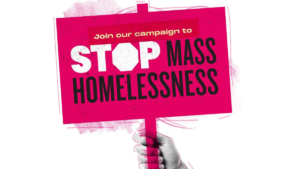By Jack Perschke, Partner at Netcompany
At the start of the UK’s lockdown, the UK Government called for 250,000 volunteers to step forward and support coronavirus sufferers across their communities. Within days, more than 750,000 people signed up to become an NHS Volunteer Responder, via the GoodSAM app.
The response really captured the UK’s capacity for kindness, and an urge within us to help, however we can, in troubling times. The initiative also helped to highlight how volunteer apps are an easy way to lend a hand, in a socially-distant manner.
And, as we adjust to the rest of 2020, and continue to look towards post-COVID times, we’re asking, how can the voluntary sector ensure that people remain interested and engaged with helping those in need?
Charities have been tentatively using apps to recruit and manage volunteers for the past few years, with varying levels of success.
In order to ensure the continued uptake of voluntary apps, we as developers need to identify more creative ways to fulfil community need. We need to make signing up to volunteering as easy as getting an Uber, or ordering a takeaway.
It’s vital to consider the potential volunteers’ decision-making process, and how that can be supported by better designed content.
The swipe effect
Horizontal swiping has become a common interaction technique on smartphones. Dating app, Tinder, though not without its faults, is often held up as an example of good UX and gamification. Its ‘swipe right’ mentality is one that has been adopted across multiple app developments in recent years, because it’s simple, intuitive, visually appealing, and a wide range of demographics are familiar with it.
We’ve been working on an app aimed at recruiting 16-17-year-old volunteers, and the swipe interaction was swiftly identified as a key function, for all the reasons listed above.
The app also not only aims to connect new and existing volunteers to opportunities of interest, it creates a log of all the work they are doing. It highlights milestones the volunteer has achieved, such as how many hours they’ve completed, as a way of encouraging them to continue their volunteer journey. It offers a grading system – bronze = 20 years of volunteering, silver = 30 hours, etc, which helps to keep the user engaged, and could also encourage some healthy competition.
All of these steps help to accelerate the process of matching volunteers to relevant opportunities, and help to get them ‘on the ground’ as soon as possible. Which of course, is the ultimate aim.
Securing the data
We’ve seen the roll-out of the NHS COVID-19 contact-tracing app hit a number of stumbling blocks in recent weeks, as data security issues continue to overshadow the benefits the technology has in tackling the spread of the virus. Trust is key to the user adoption, especially when we are relying on volunteers’ goodwill to complete a vital task.
Applications need to integrate fully and seamlessly with a volunteering organisation’s CRM systems in a closed-loop ecosystem, ensuring the security of a volunteer’s information, avoiding duplication of data and complying with GDPR regulations.
The pandemic has highlighted a large proportion of the general public that have the capability and capacity to care. In order to keep these people engaged, and keen to continue giving their services and time, we need to make the technology available to them seamless, intuitive, and secure.









